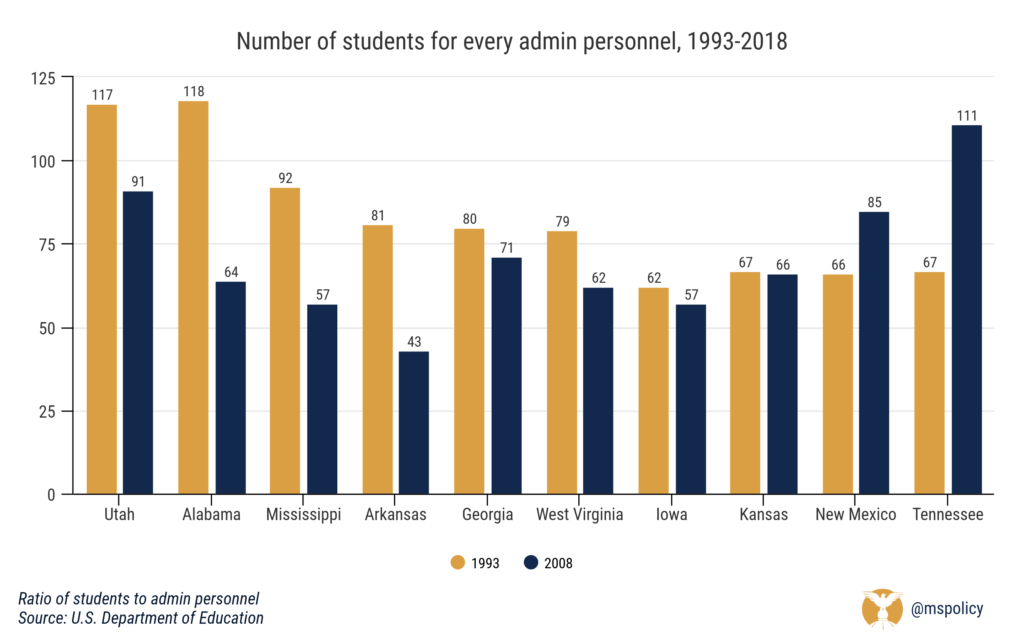According to an analysis of data from the National Center for Educational Statistics, the state had more students per administrative staffer (92:1) than the national average, 75:1, in 1993.
By 2018, the U.S. average was down to 63 students per administrative employee and Mississippi had fallen below that number at 57:1.
Administrative personnel are defined as school administrators (principals and assistant principals), district administrators and administrative support staff (both at the individual school and district levels).
The number of administrative personnel in Mississippi public schools increased by 51.1 percent from 1993 to 2018 while the inflation-adjusted spending on K-12 increased by 78.54 percent during the same span, according to data from the NCES.
According to the fiscal 2020 budget summary, $9.381 billion of the state’s $21.08 billion budget (44 percent) is from federal funds.
A useful exercise is to compare the growth of K-12 administrative staff in the Magnolia State with states with similar populations, with West Virginia included because of a similar rate of poverty. These states include:
| State | Population |
| Utah | 3,161,105 |
| Iowa | 3,156,145 |
| Arkansas | 3,013,825 |
| Mississippi | 2,986,530 |
| Kansas | 2,911,505 |
| New Mexico | 2,095,428 |
| West Virginia | 1,805,832 |
In 1993, Mississippi (92:1) had one of the nation’s smaller K-12 administrative states. This was better than states with far larger populations, including Florida (65 students per administrative employee), Tennessee (67:1) and Georgia (80:1). Only Alabama regionally (118 students per administrator) was better than Mississippi.
Arkansas was next best, with 81 students per staffer. Iowa was the worst, with 62 students per administrative staffer.

Fast forward to 2018 and the Mississippi’s growing K-12 administrative state (57:1) put the state near the back of the pack, worse than all but Arkansas and tied with Iowa. The Natural State had 43 students per every administrative staffer.
West Virginia had 62 students per administrative employee, while Alabama had 64 per staffer. Georgia (71 students per staffer) and Tennessee (111 students per administrator) were two of the best in the Southeast.
Florida was the worst regionally, with 40 students per administrator.
In 1993, K-12 spending from state, federal and local sources in Mississippi added up to $2,737,277,644, adjusted for inflation.
By 2018, that figure ballooned to $4,886,998,652, despite the number of students shrinking from 505,907 in 1993 to 470,668 in 2018.